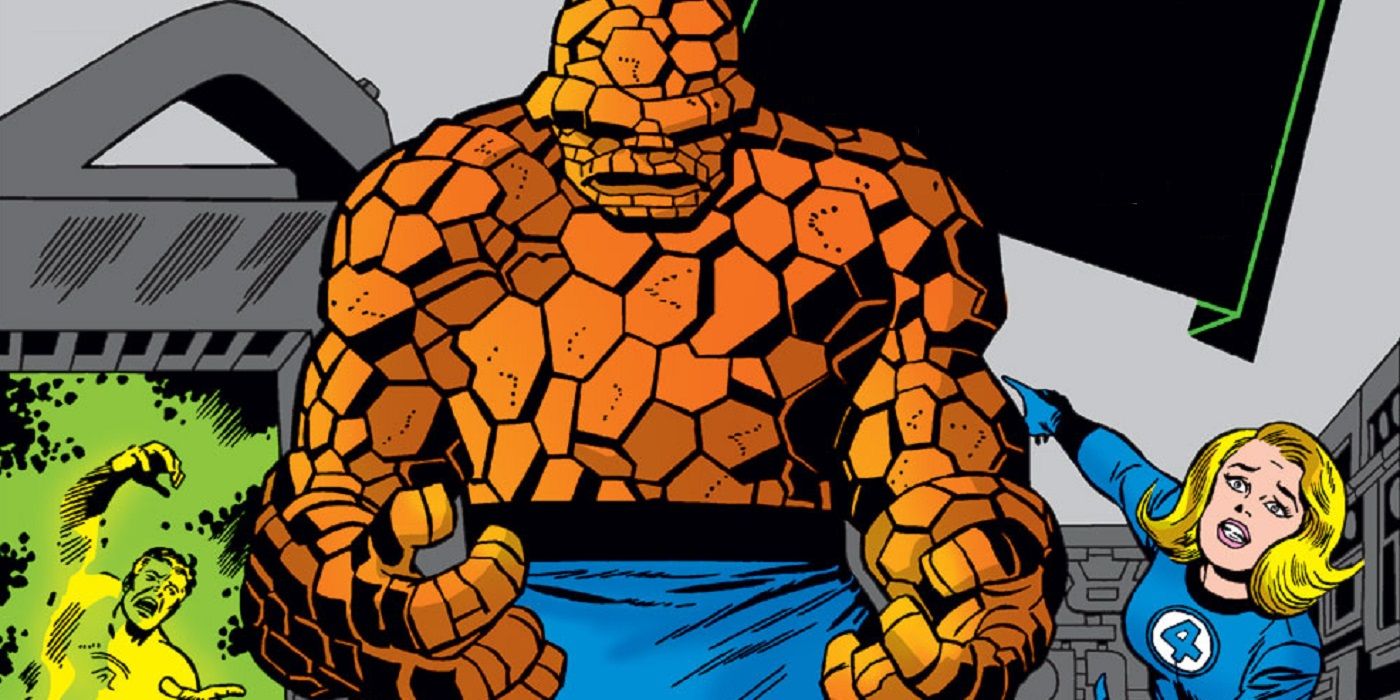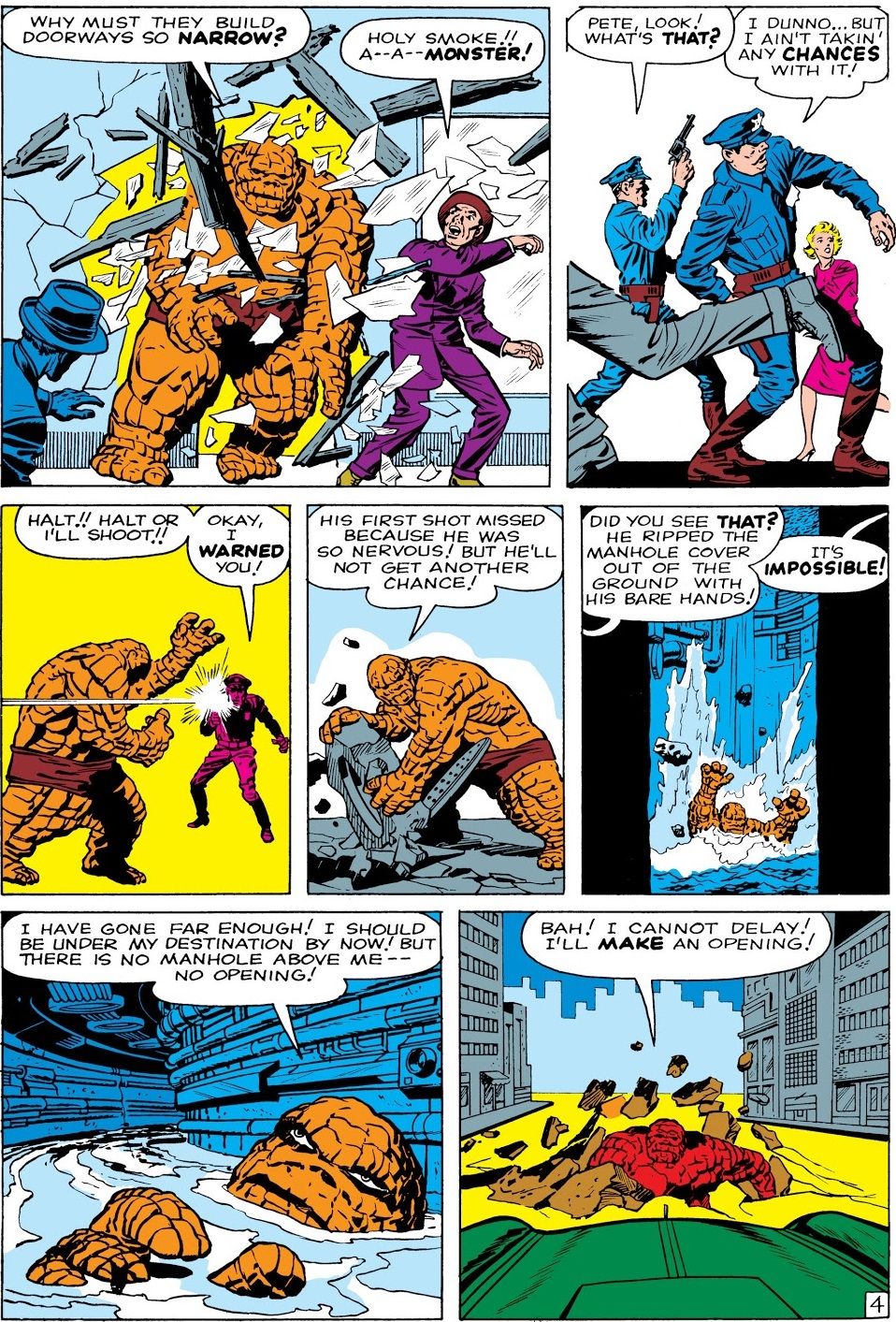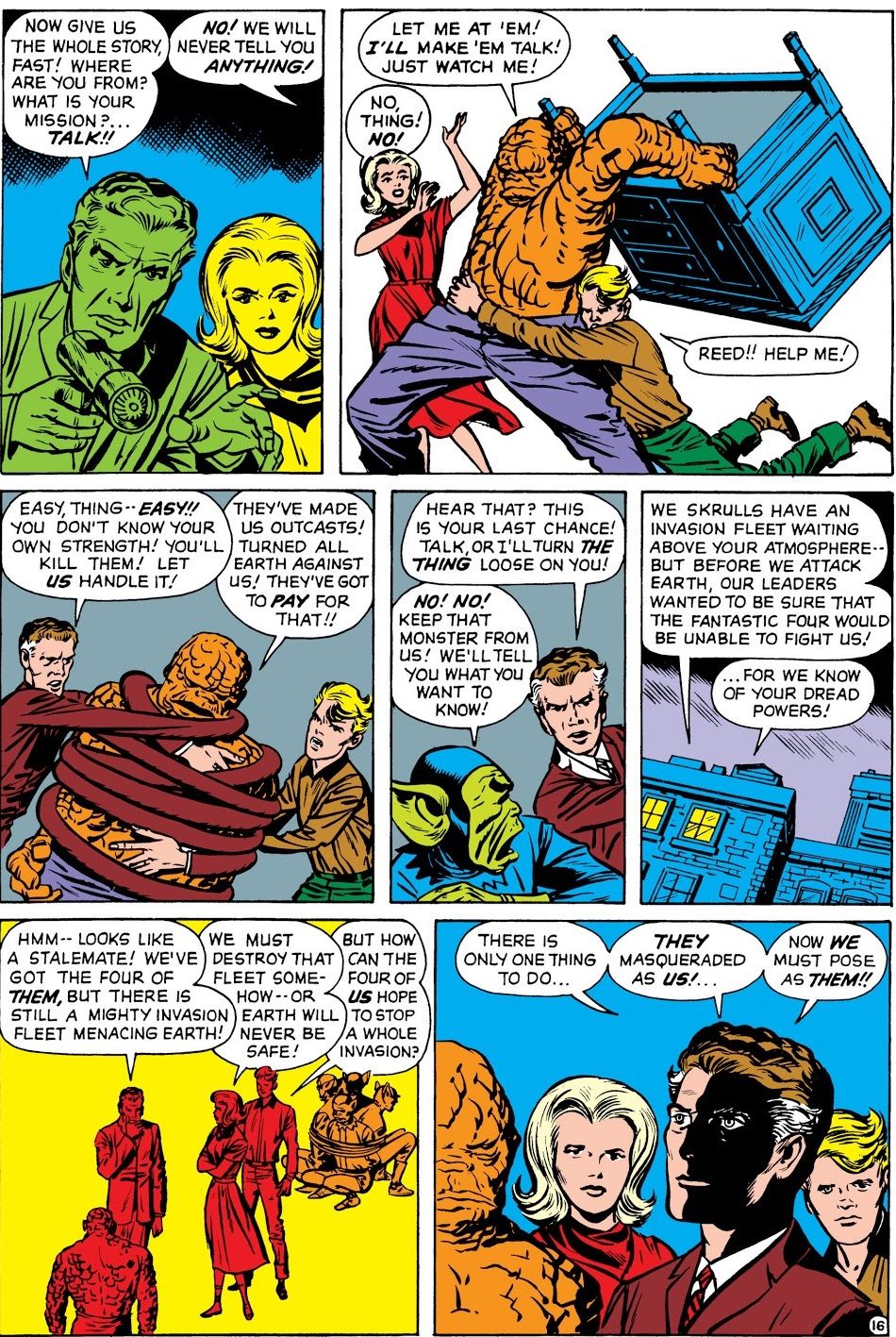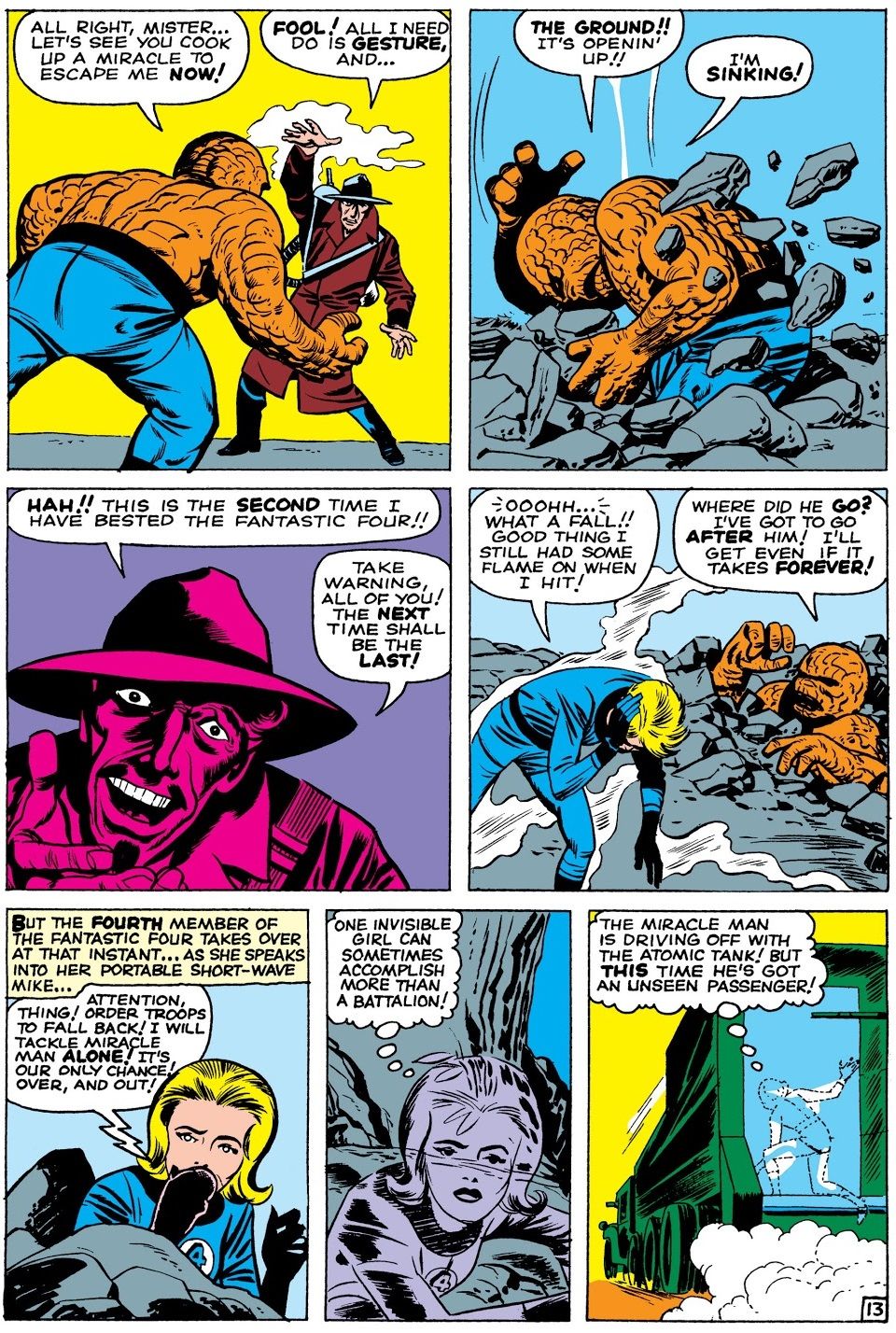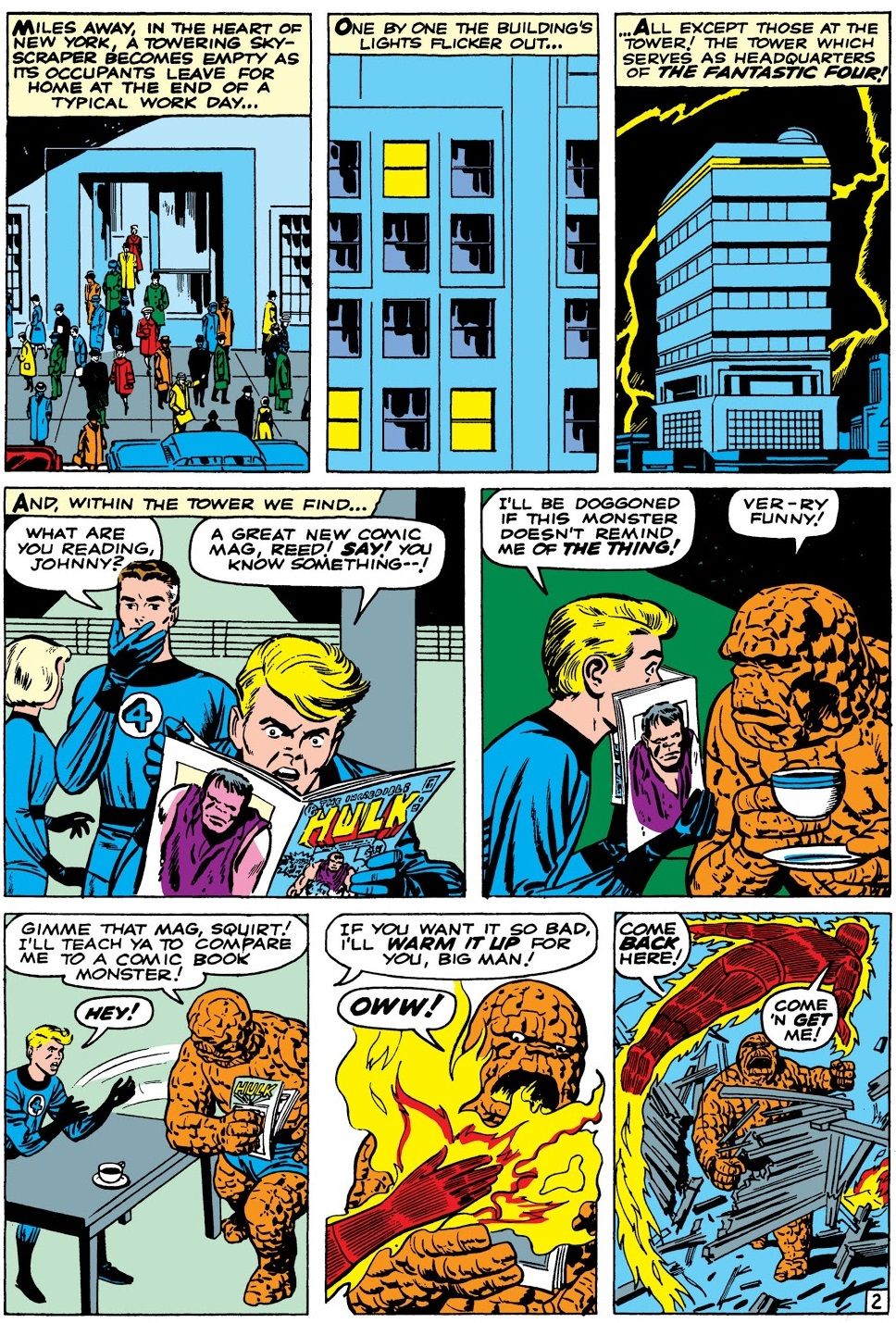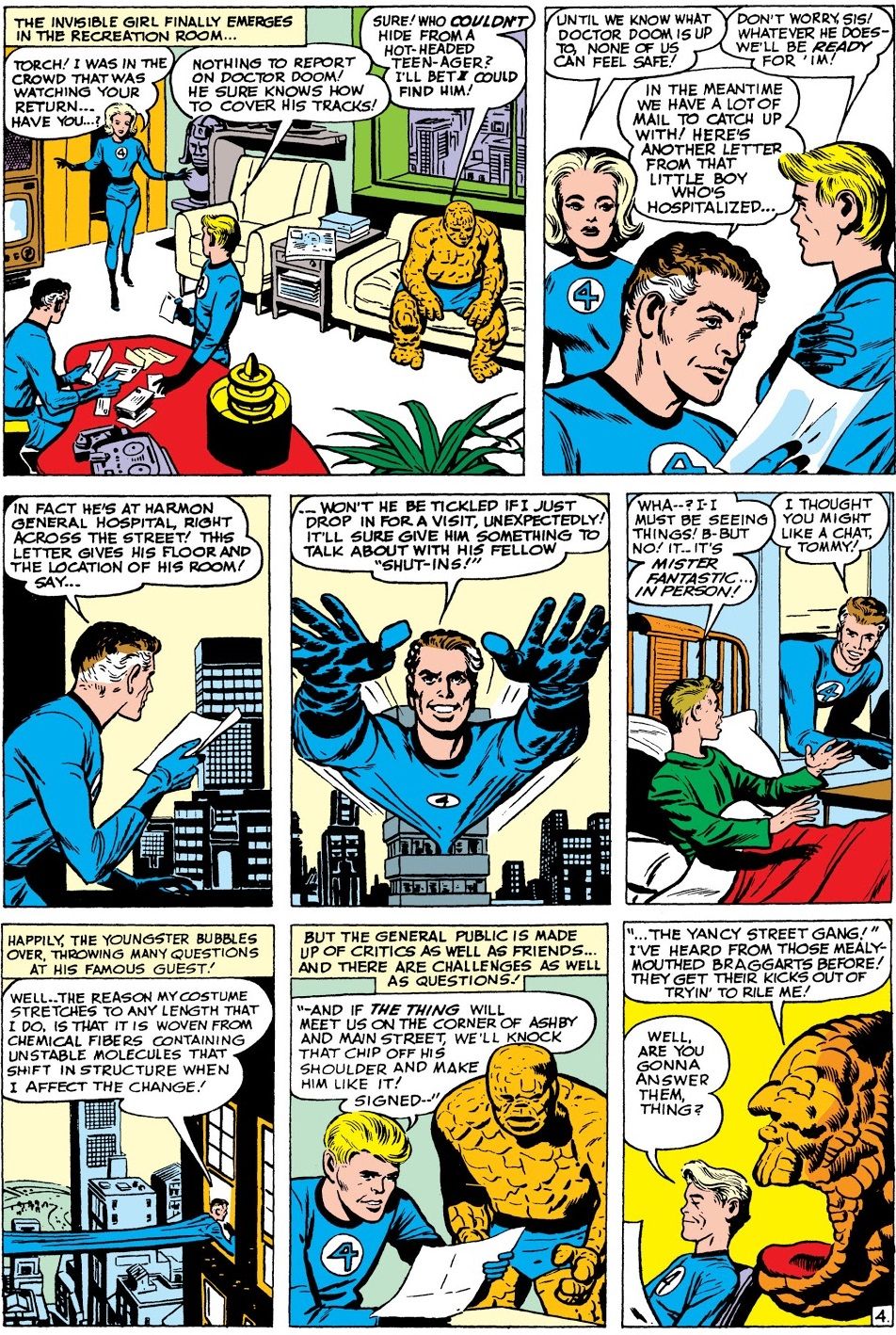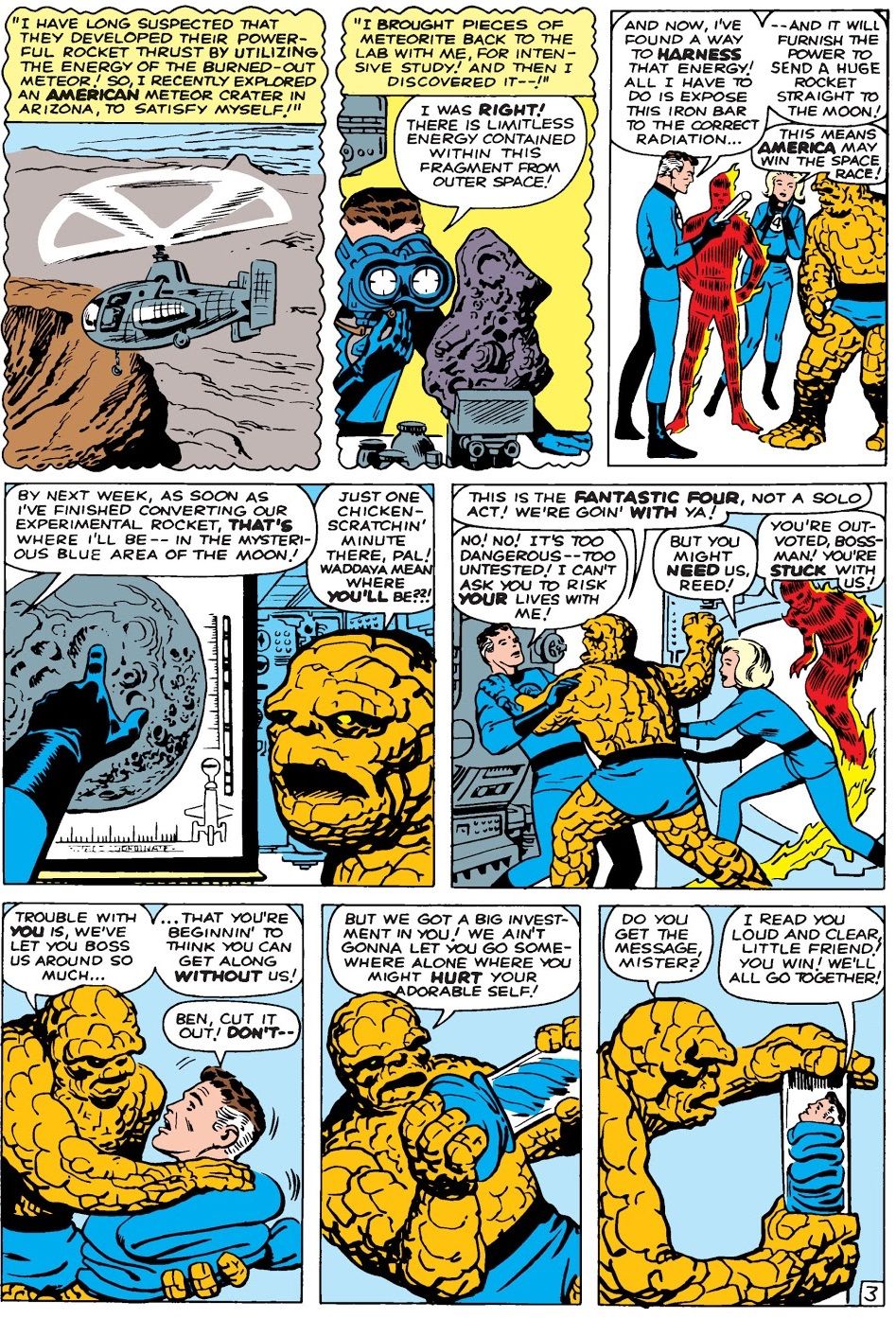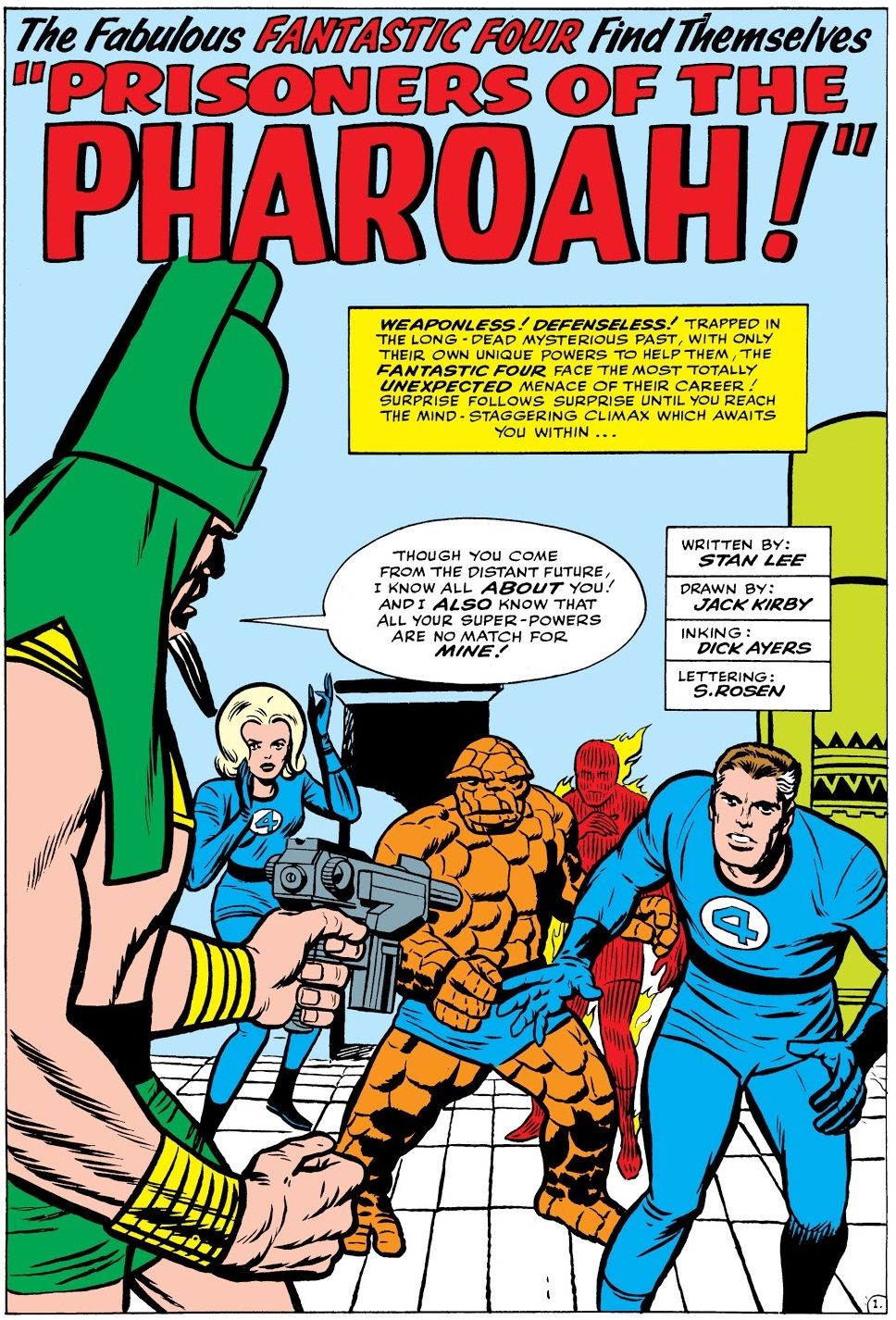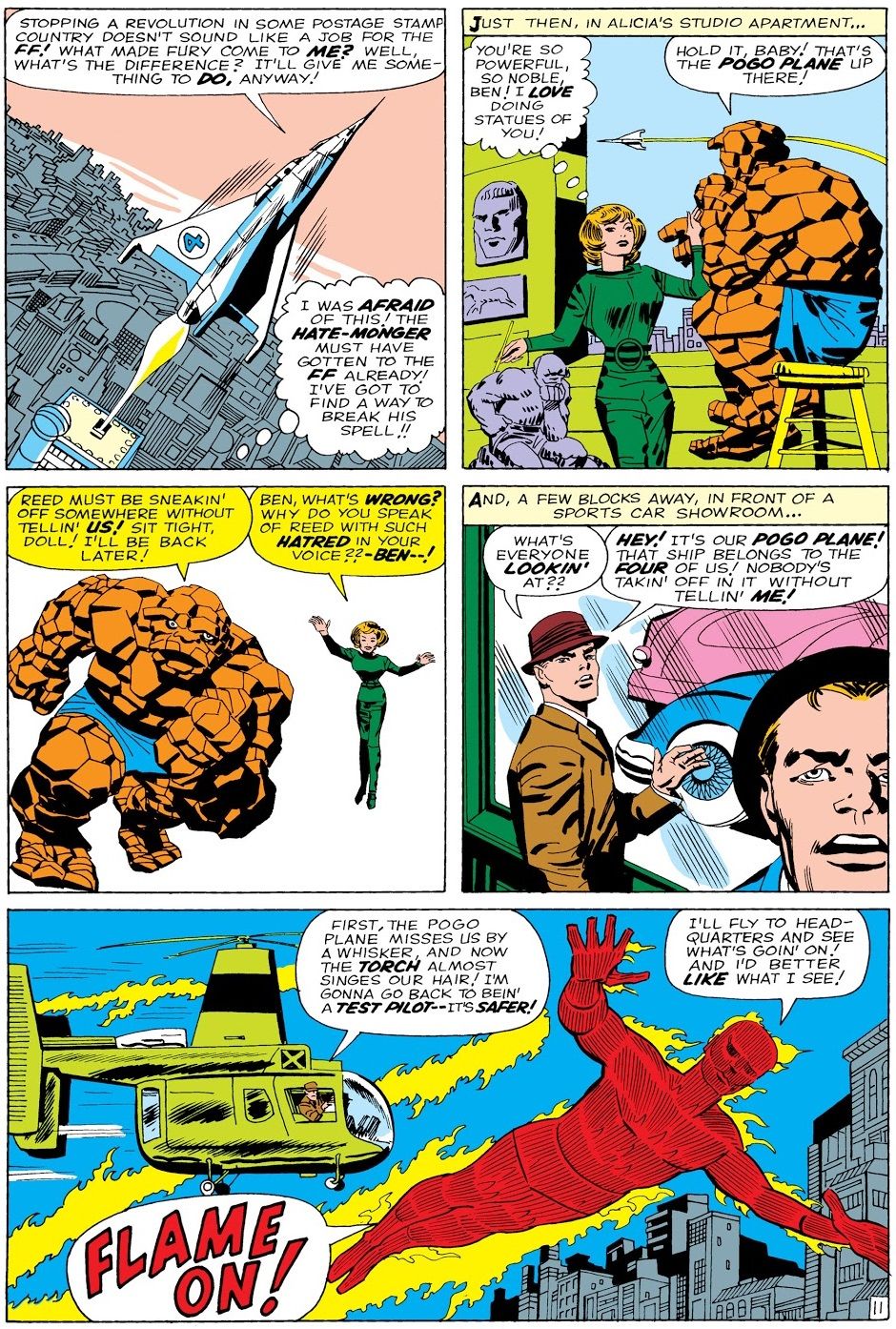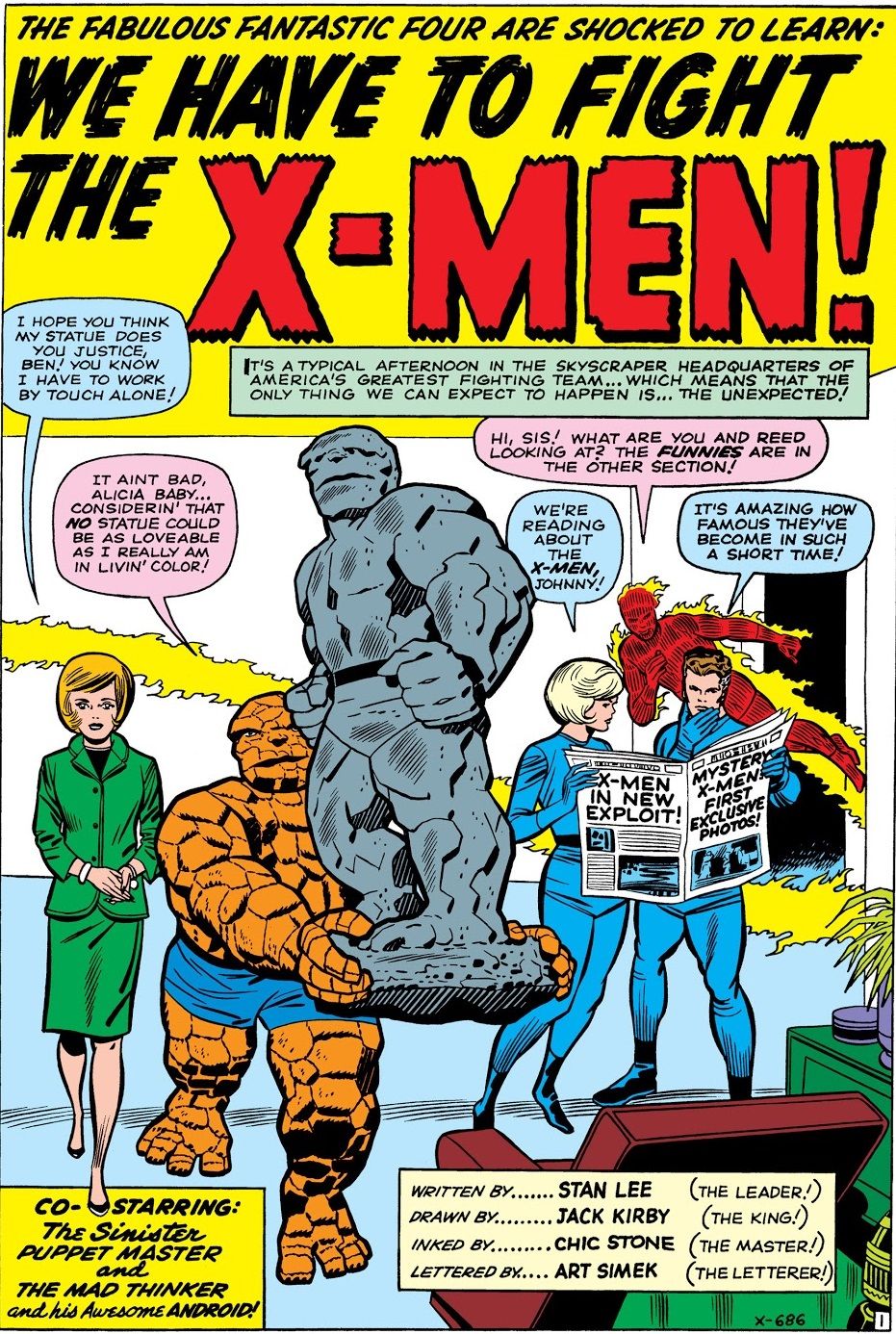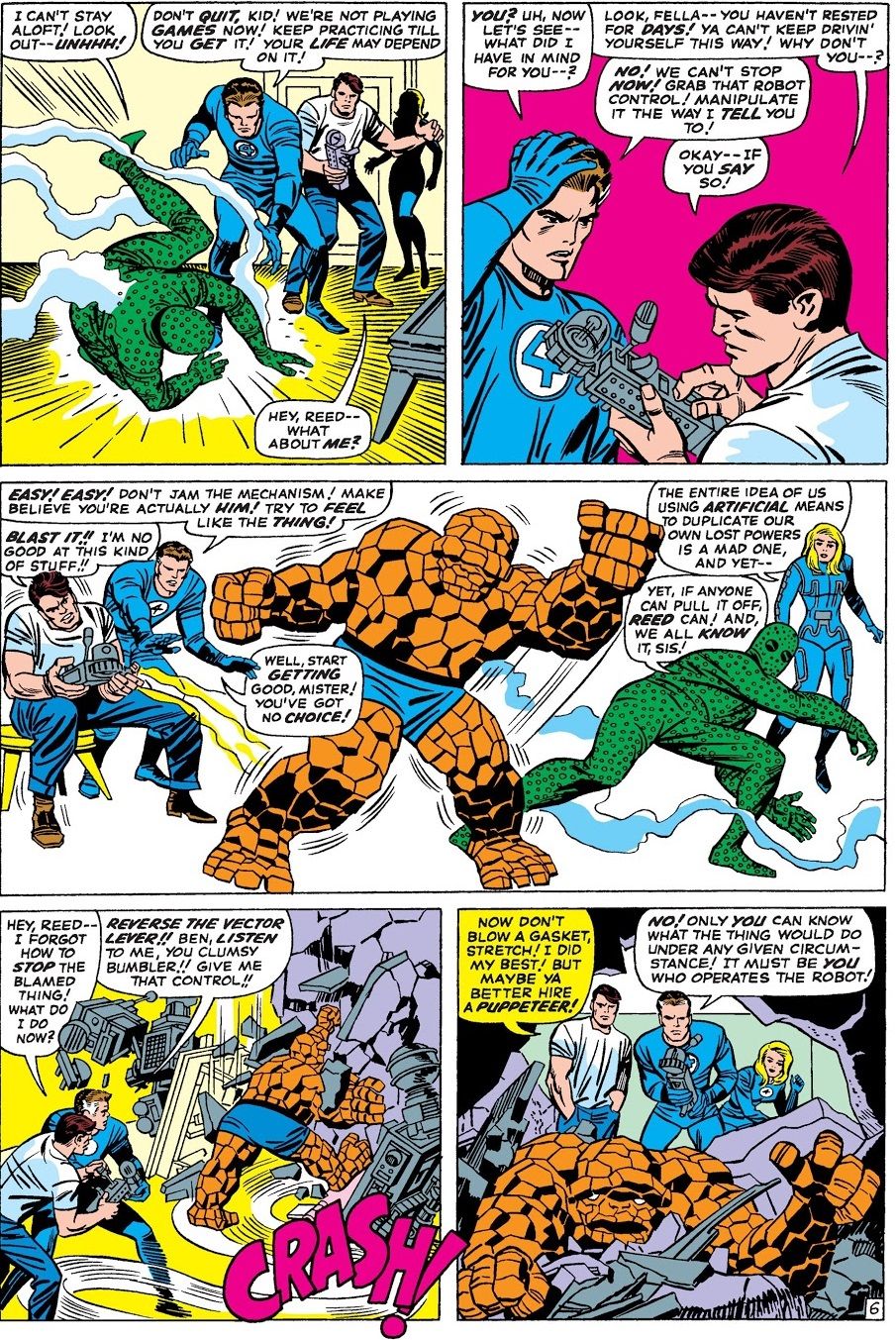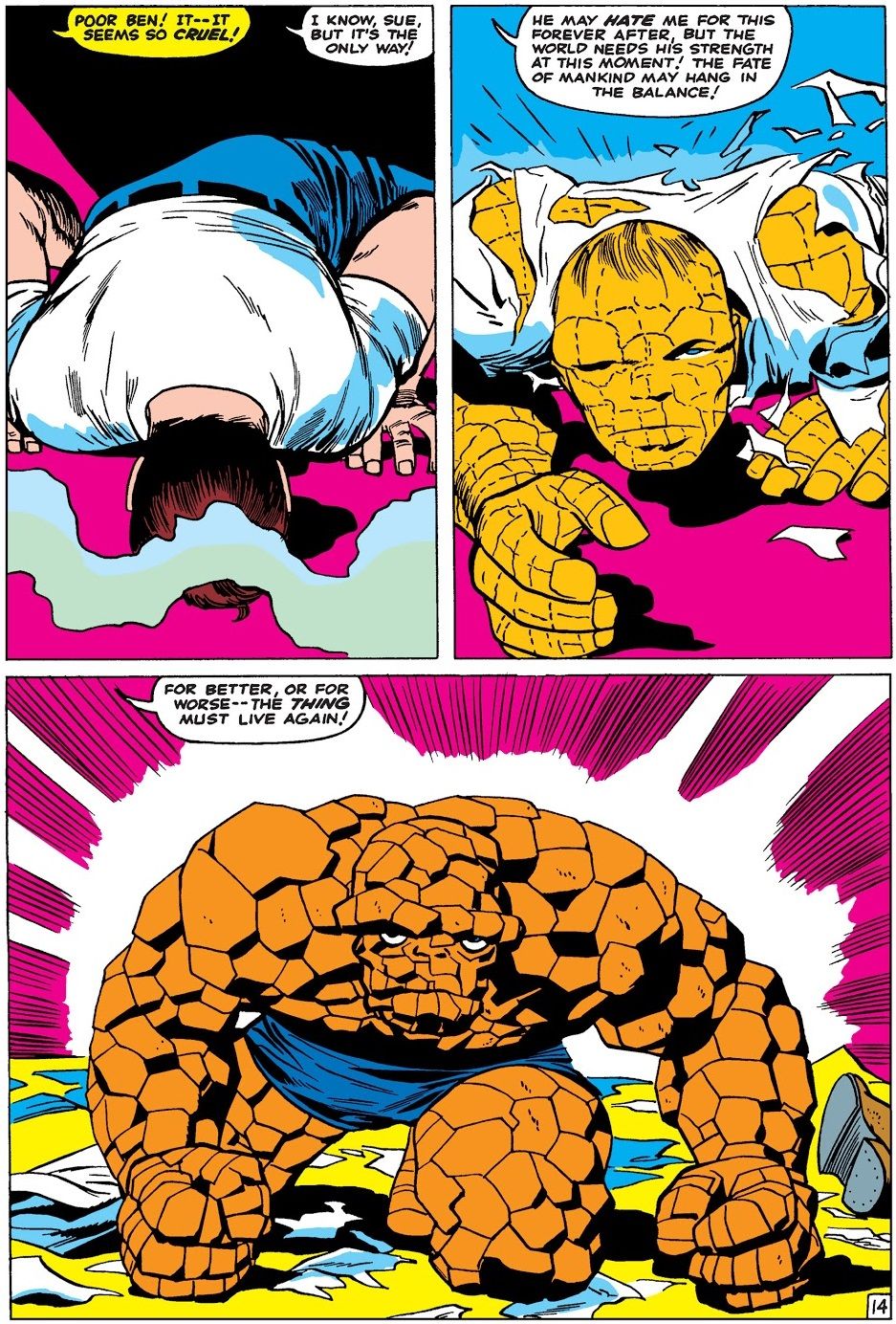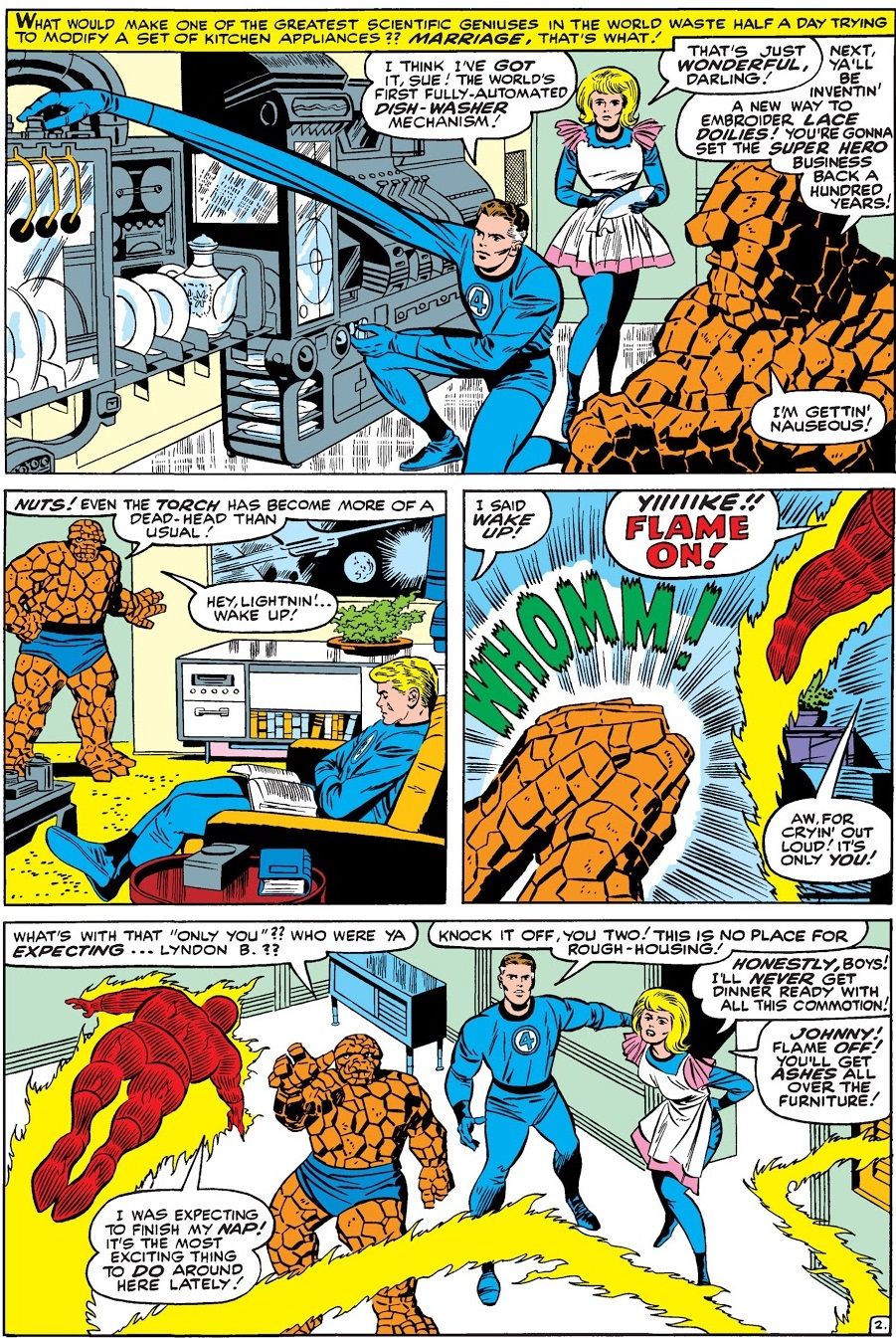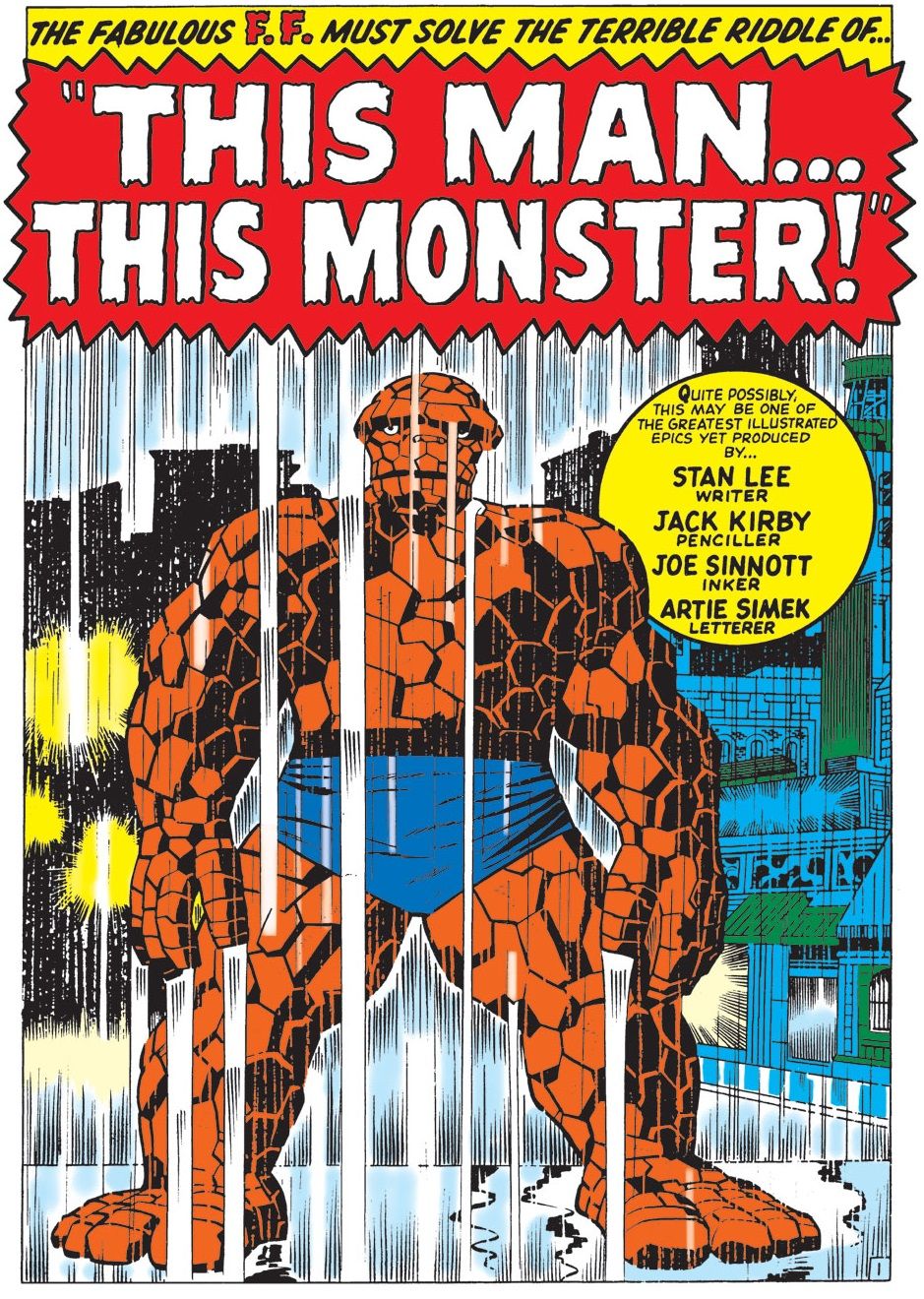Knowledge Waits is a feature where I just share some bit of comic book history that interests me.
In another piece dealing with Jack Kirby and Joe Sinnott, I recently discussed an old Comic Book Legends Revealed that I did about how Jack Kirby initially intended for the Thing to look like he had sort of dinosaur hide. As Kirby noted at one point, “If you’ll notice, the beginnings of Ben, he was kind of lumpy. I felt he had the power of a dinosaur, and I began to think along those lines. I wanted his flesh to look like dinosaur hide.”
However, that approach was not translated well by Kirby's inkers. He went through a pile of different inkers on Fantastic Four until Joe Sinnott took over the series. The difference between Sinnott and the others is that unlike the other inkers, who Kirby would not let affect how he drew the Thing, he actually changed his approach to the Thing once Sinnott got there. Kirby began to pencil the Thing as Sinnott was inking him. That has been the Thing's look ever since.
But how did we get there?
Let's watch the Thing evolve from inker to inker in the early years of the Fantastic Four!
PROBABLY GEORGE KLEIN
No one is ABSOLUTELY sure who inked Jack Kirby on the first issue of Fantastic Four, but the most likely candidate is George Klein. He got pretty close to the dinosaur look...
DEFINITELY GEORGE KLEIN
On the off chance that Klein did not ink #1, he did ink #2, so we'll share that one, too, just to be safe...
SOL BRODSKY
Brodsky kept things mostly the same over his two issues.
JOE SINNOTT FILL-IN
So did Sinnott when he did a fill-in issue in Fantastic Four #5.
DICK AYERS
Here is where the change came in. Ayers clearly went to a more nuanced approach, with less of an emphasis on the lumpiness....
STEVE DITKO
Ditko did a fill-in in the middle of Ayers' run and Ditko went for a pretty darn lumpy look...
DICK AYERS AT THE END
However, by the time that Ayers left the book, you can see that he has already begun to adopt the sort of rock-like look that would eventually define the Thing....
Page 2: [valnet-url-page page=2 paginated=0 text='George Roussos makes the big change!']
GEORGE ROUSSOS
Roussos, though, who was the background inker for Bob Kane back in the early 1940s (when Jerry Robinson was inking Kane), was the guy who really went all in on the rocks right away during his run from Fantastic Four #21-27...
CHIC STONE
Chic Stone, though, pulled back a bit on his run from Fantastic Four #28-38...
He was doing a bit more of a scaly look.
FRANK GIACOIA
By the time Giacoia did a fill-in issue, though, the rocky look was pretty well-established...
VINCE COLLETTA
In his short run from Fantastic Four #40-43, Colletta definitely went big on the rocks...
JOE SINNOTT
Actually, looking at it now, Sinnott's work seems like it a part of the natural progression of the earlier artists, doesn't it?
The big difference is that Sinnott's version was now the one that Kirby would draw. So it is more that Sinnott locked in this specific rocky version of the Thing, as seen in Fantastic Four #50...
And then that was THE look for the Thing from that point forward.
It is cool how actually looking at the progression shows you things you didn't notice before. I thought the change from Stone to Sinnott was more dramatic, and to a certain extent it WAS, but that progression was blunted by the fact that Giacoia and Colletta had already THEMSELVES moved on dramatically from Stone's take on the Thing. Look at that Colletta Thing from #40. That pretty much IS the rockiness of the Sinnott thing, right? The big difference is that Sinnott just smoothed things out a bit to make them a bit more defined. So Sinnott is still key (as I noted, Kirby was still drawing the Thing the old way for years - the inkers just interpreted it their own way, until Sinnott), but he is far less key than I have thought.
https://www.cbr.com/fantastic-four-thing-rocky-skin-evolution/

